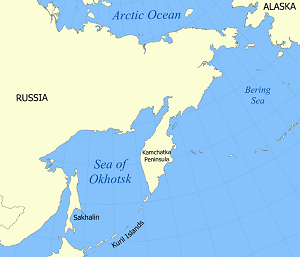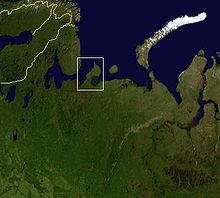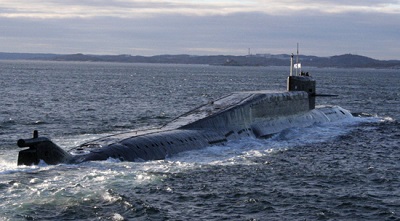Russia Tests Ballistic Missiles in the Arctic
 Russia test fired three ballistic missiles on Wednesday, two of which were launched from submarines: one in the Barents Sea and one in the Okhotsk Sea.
Russia test fired three ballistic missiles on Wednesday, two of which were launched from submarines: one in the Barents Sea and one in the Okhotsk Sea.
The tests are part of Russia’s increased military activity in the Arctic which has intensified since 2014.

Another missile was launched from the Northern fleet’s Delta-IV class submarine Novomoskovsk from a submerged position in the Barents Sea. The missile hit the Kura test range in the Far East after a flight across the Arctic.
“Successful firing the ballistic missile from the strategic submarine Novomoskovsk showed a high level of readiness of the Federation’s submarine forces and confirmed the effectiveness of command and control system of the naval strategic nuclear forces,” the Ministry of Defence said in a statement.
 Russia has been building boosting its Arctic activities by building airbases, deep-water ports, building SAR stations, deploying air defence systems, force modernization and military exercises.
Russia has been building boosting its Arctic activities by building airbases, deep-water ports, building SAR stations, deploying air defence systems, force modernization and military exercises.
Russia’s Ministry of Defence continues building autonomous military bases in the Arctic on Sredny Island, the Franz Josef archipelago, the New Siberian Islands and Wrangel Island. Construction of autonomous military towns is expected to be finished on the Frantz Josef Land Archipelago and New Siberian Islands this year.
A network of airfields and monitoring stations are also under construction in the Arctic to improve the nation’s air defenses. Russia also has plans to build several gas storage facilities in the Arctic to support Russian military bases in remote areas.
Russia’s Navy has ordered two Arctic patrol boats that will be capable of breaking through ice 1.5 meters (five feet) thick. The new vessels will be delivered from the Admiralty yard in St. Petersburg by end of 2020. The vessels are a new class capable of tug, icebreaking and patrol operations.
Aleksi Korpela, Program Editor for Procurement at the NATO Association of Canada, said earlier this year that Russia’s desired end state is to have a total of 50 bases by 2020 throughout the Arctic region.

that matters most
Get the latest maritime news delivered to your inbox daily.
“Russia’s efforts to expand its capabilities in the Arctic are certainly impressive and comprehensive, but it is unclear as to what their purpose is,” said Korpela. “For the most part, Russia is concerned with two things. The first is the military security of the Arctic in areas with close proximity to other states. This would include Finland and Norway in the northwest and the United States and China in the east.
“The second concern is air and maritime infrastructure for civil, economic, and SAR purposes. As the Northeast Passage becomes more accessible to shipping, resource extraction activities increase, and polar tourism becomes more prevalent, such infrastructure becomes essential for maintaining logistics and security throughout the Arctic.”
